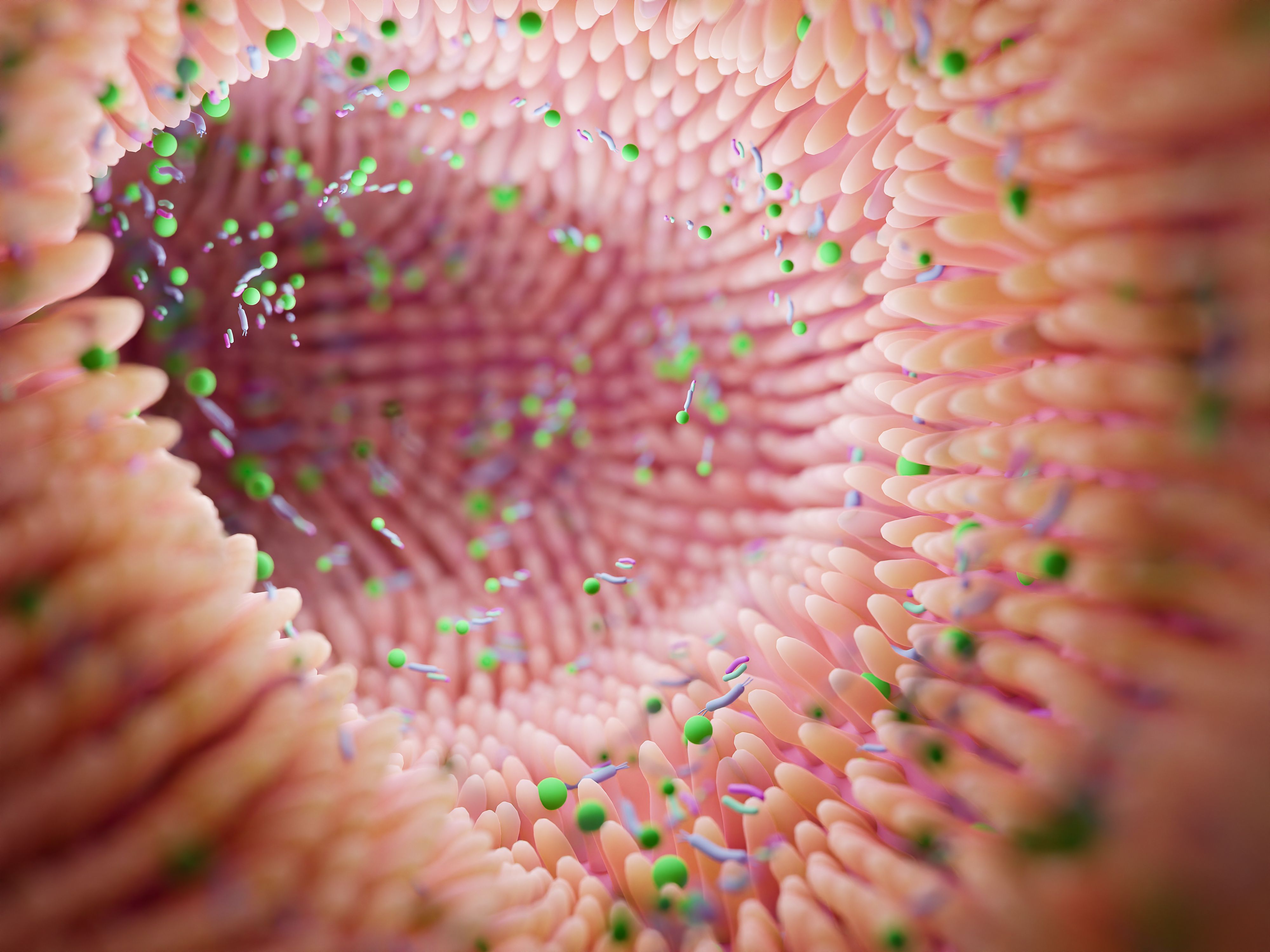… on and in us. And that’s good!
Trillions of microorganisms colonize our body in the gastrointestinal tract, on the surface of the skin and on our mucous membranes (e.g. mouth, nose, vagina). They are collectively called the microbiome. The mutually beneficial coexistence (symbiosis) works as long as all microorganisms work together perfectly and are in balance. We notice relatively quickly when our microbiome is out of balance. For example, we might notice that the barrier of our skin or mucous membranes are no longer working efficiently due to a fungal disease. Complaints in the gastrointestinal tract due to a disturbed intestinal microbiome are also not uncommon. It is therefore worth paying attention to the microbiome and its biodiversity before an imbalance, a so-called dysbiosis, develops (1, 2).
Awareness of our wellbeing and needs.
The last few years have taught us that we do not have everything in our own hands, that many things are beyond our power of decision and that we have to adapt to the circumstances. Fortunately, we increasingly perceive our body as a source of strength and no longer take its functioning for granted. We start to think more holistically: feeling good and healthy takes more than just the absence of illness.

So small and yet so strong!
In this context, our gut microbiome, which is sometimes even referred to as an “organ” (3), is receiving increasing interest. No wonder! After all, up to 2kg of our body weight is due to our complex ecosystem of bacteria, viruses, fungi and arachea. What sounds like pathogens has a completely different function, namely that of a protective shield against pathogenic germs (4). Bacteria make up the majority of the 39 trillion microorganisms. Among other things, they prevent pathogens from settling in our intestines, have an anti-inflammatory effect and thus make a decisive contribution to our immune system (3, 5).
Practical tip:
To support our intestinal bacteria, prepare a prebiotic salad with boiled and then cooled potatoes, pasta or rice, onions and chives and add asparagus, tomatoes or beans depending on the season.
Prebiotics and gut bacteria.
Prebiotics are fibers that cannot be digested by our small intestine and only “feed” our bacteria in the large intestine. These produce SCFAs (short-chain fatty acids: acetate, butyrate, propionate), which influence blood sugar levels, the feeling of satiety and the transport and absorption of vitamins and minerals. In addition, they support the intestinal barrier, counteract inflammation and strengthen the immune system. Our gut microbiome is a real powerhouse that can make an important contribution to our health (3, 5, 6).
Diversity is good!
So, how do we get the “ideal” microbiome? Unfortunately, it’s not that easy. Our gut microbiome is unique, nearly as a fingerprint, and differs in composition from one person to another. In addition, it depends on numerous factors such as diet, exercise, stress, age, illness, medication, etc. The presence of certain bacteria does not say anything about the quality of the microbiome. Statements can only be made by looking at all of our microorganisms in the gut. As with any ecosystem, the decisive factors are diversity, functionality and balance in interaction (2, 7).
Take the composition of your gut microbiome into your own hands!
The great thing about our gut microbiome is that we can largely influence its composition ourselves. This can be done by adopting certain attitudes, namely:
• gut-friendly diet. It improves the diversity of your microbiome and thus its functionality!
• exercise. It is not only good for your body as a whole, but also for your gut microbiome!
• relaxation techniques. They make you more resilient to stress, which your gut microbiome will thank you for!
It’s easier to take targeted action when you know the microbial consistence of your gut. Interested in knowing how diverse your gut microbiome is and learning more about how you can improve it?
Contact us!
References
(1) Willem M. de Vos et al. (2022): Gut microbiome and health: mechanistic insights, in: Gut, 71:1020-1031.
(2) Michael I. McBurney et al. (2019): Establishing What Constitutes a Healthy Human Gut Microbiome: State of the Science, Regulatory Considerations, and Future Directions, in: The Journal of Nutrition, November 2019, 149(11):1882-1895.
(3) Marialetizia Rastelli et al. (2019): The Gut Microbiome Influences Host Endocrine Functions, in: Endocrine Reviews, October 2019, 40(5):1271-1284.
(4) Lucy J. Mailing et al. (2019): Exercise and the Gut Microbiome: A Review of the Evidence, Potential Mechanisms, and Implications for Human Health, in: Exercise and Sport Sciences Reviews, April 2019, 47(2):75-85.
(5) Soma Ghosh, Sreemanta Pramanik (2021): Structural diversity, functional aspects and future therapeutic applications of human gut microbiome, in: Archives of Microbiology, 203:5281-5308.
(6) Dorna Davani-Davari et al. (2019): Prebiotics: Definition, Types, Sources, Mechanisms, and Clinical Applications, in: Foods 2019, 8(92); https://www.mdpi.com/2304-8158/8/3/92.
(7) Juliana Durack and Susan V. Lynch (2018): The gut microbiome: Relationships with disease and opportunities for therapy, in: Journal of Experimental Medicine 2018, 216(1):20-40.